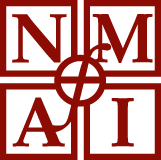

1910, oil on canvas
36" x 25", signed lower right
Horton Steel Fishing Rod advertisement


1901, oil on canvas
14 1/8" x 8 1/8", signed lower right
“General Zachary Taylor at the Battle of Buena Vista,” Success Magazine, 1901


1904, oil on canvas
21" x 14 1/8", signed lower right
Adventures In Beaver Stream Camp: Lost in the Northern Wilds, by: A. Radclyffe Dugmore, 1904

Phillip R. Goodwin
1881–1935
As a young boy in Norwich, Connecticut, art consumed Philip R. Goodwin, and he sketched constantly. Like so many other successful illustrators who were child prodigies, he sold his first illustration at eleven years old. Because of Goodwin's obvious innate talents and early successes, his family sent him to study at the prestigious Rhode Island School of Design and later to the Art Students League in New York. He then realized that the best place for him to study was under his idol, Howard Pyle, at the Drexel Institute in Philadelphia (1899-1900), and later with Pyle in Wilmington (1901-1903). Philip Goodwin was one of Pyle's exemplary students, for he followed the basic tenets of illustration gleaned from 'The Father of American Illustration' religiously. Some of Pyle's most prevalent axioms for creating successful illustrations were that an artist should travel to the place they were illustrating in order to gain insights and empathy with the environment and to paint models in authentic costumes. During his period in Wilmington, Goodwin had grown so close to Pyle and was such an exemplary student that he was invited to Pyle’s 50th birthday party.
Well educated in fine art and illustration, Goodwin had an especial love for his subject matter, which was almost exclusively Western outdoor scenes with cowboys and Indians, wildlife, hunting and fishing. When he opened a studio in New York City, it seemed a dichotomy of interests. Nevertheless, his talent and perseverance sustained him and soon Goodwin’s illustrations were being published in all the best and most popular magazines, including Everybody’s, Harper’s Monthly, Harper’s Weekly, Outing, Persimmon Hill Magazine, and Scribner’s. His calendars were published by Brown and Bigelow, the nation’s largest calendar publisher; advertising commissions for firearms companies were plentiful, including the two biggest, Winchester Arms and Marlin Firearms Company; and book illustration commissions included the notable Call of the Wild by Jack London and Theodore Roosevelt’s African Game Trails. Goodwin's career thrived with both critical and popular enthusiasm.

